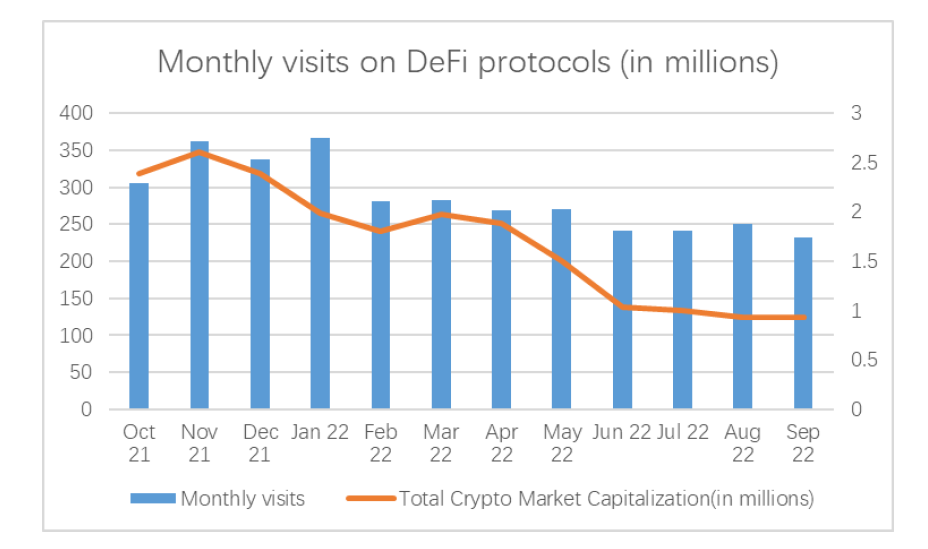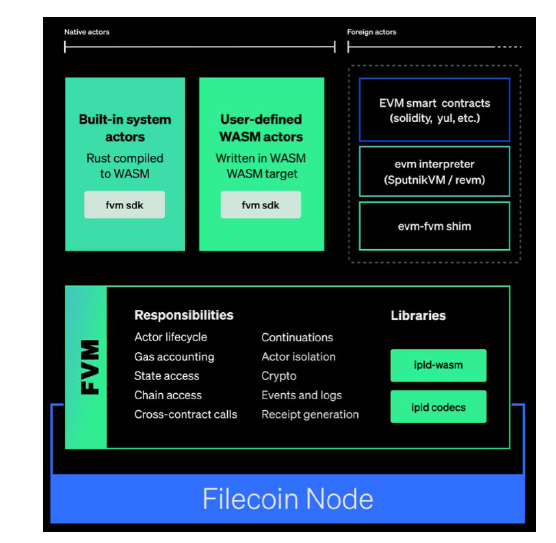Huobi Research predicts a crypto market bottom in 2023, as well as significant breakthroughs in on-chain storage and layer–two roll-ups.
Researchers at Huobi have dived into major events that happened in the crypto market and industry in 2022 to try and predict how they might form the landscape in the year to come.
Huobi Predicts Market Bottom in Q1 2023
With leverage on DeFi protocols shrinking, and the Fed likely to have passed the toughest phase of its tightening strategy, Huobi believes that market jitters caused by the fall of FTX will form a bottom for the crypto industry in Q1 2023.
SponsoredAccording to Binance’s former strategy chief Gin Chao, previous cycles suggest that Bitcoin reaches a high on average 18-24 months after a bottom. Depending on where market participants believed the 2022 low was, they could see a high by the end of 2023 or perhaps a little later, given the current macroeconomic environment.
Investors Show Healthy Interest in L1 Projects
Despite the prolonged bear market, Huobi’s report estimated industry investments in Web3 projects exceeded $27 billion in 2022. Though down from previous quarters, this number suggests that institutional interest in decentralized finance remains healthy. An increase in the number of unique DeFi users in the past year backs up investor interest.

Investments in the third quarter totaled roughly $6 billion, with layer one (L1) application development on the Sui and Aptos blockchains receiving $625 million.
Investors also favored infrastructure projects on L1 blockchains, zero-knowledge roll-ups, and middleware applications like decentralized identities and oracles.
A layer one blockchain provides the base infrastructure and rules for processing and finalizing transactions in a blockchain ecosystem. Special layer two (L2) chains, called roll-ups, improve the scalability of L1 chains. This is done by executing batches of transactions and posting that data on L1.
The bear market has seen several new L2 DeFi projects launch, a trend that looks set to continue in 2023. The total value locked in decentralized applications rose 131% between Jan. and Oct. 2022 to 7.5% of the total value locked on Ethereum.
Sponsored Sponsored
DeFi Protocols Need Disruptive Products to Survive in 2023
DeFi’s success in 2023 will likely come from protocols securing a stable revenue stream instead of relying on users to supply liquidity in exchange for rewards.
They will also need to explore offering derivative financial products to disrupt the power concentration of a handful of protocols. Lastly, protocols will need to embrace necessary regulation to survive and thrive. The EU’s Markets in Crypto Assets bill, due for ratification in 2023, includes rules for the DeFi industry.
Special purpose blockchains designed solely to run decentralized applications will likely also come into vogue in 2023, Huobi speculates.
Projects like Axie Infinity and DeFi Kingdoms already run on proprietary layer two dApp blockchains. Several existing L1s can provide the substrate for these L2s, including Polygon, Avalanche, and BNB Chain.
Additionally, the interest of wealthy web2 moguls like Jack Dorsey and Twitter CEO Elon Musk in cryptocurrencies will likely see more polish brought to social media dApps in 2023.
SponsoredWork on Zero-Knowledge Rollups Will Continue in 2023
Zero-knowledge (ZK) roll-ups are a class of roll-ups that post a summary of changes required on the L1 due to transactions on the L2. In addition to the proposed changes, L2s submit a validity proof, which is a cryptographic insurance policy that the proposed L1 changes are, in fact, the result of executing the transactions in an L2 batch.
According to Huobi, validity proofs are complex, and ZK roll-ups may need special hardware to speed up the proof generation. Until that happens, ZK roll-up development will increase in 2023 but not reach mass adoption.
ZK roll-up projects to watch in 2023 are Starknet and zkSync 2.0, the latter being the fastest ZK L2. Work is being done to reduce roll-up costs by compressing transaction data sent to L1. These improvements will start in the second half of 2023 and continue into 2024.
Huobi Predicts On-Chain Storage Demand to Spike Dramatically
Next year will also see increased demand for blockchain storage, Huobi predicts.
A significant upgrade coming to decentralized on-chain storage protocols like Filecoin is the addition of programmability.
Sponsored SponsoredFilecoin has already introduced a FileCoin Virtual Machine. It executes the smart contract code needed to execute the core logic of the Filecoin network.
In the second phase of the upgrade, slated for 2023 and 2024, users will be allowed to deploy custom smart contracts on the FVM, while Filecoin closes the compatibility gap of FVM with Ethereum Virtual Machine (EVM). The EVM is the part of the Ethereum blockchain that executes smart contract code.

Improving FVM’s compatibility with EVM will allow Ethereum native applications like MetaMask to work on the Filecoin network.
How Will Regulations Unfold?
Regulations will likely address national security concerns posed by specific projects like TornadoCash, and projects whose assets are held mainly by its founders. New laws introduced in 2023 could also compel on-chain protocols to conduct know-your-customer checks and hold a protocol’s community responsible for judicial sanctions.
DeFi hacks can fast-track regulation and possibly make them cheaper to draft and implement in 2023, Chao suggested.
For Be[In]Crypto’s latest Bitcoin (BTC) analysis, click here.

